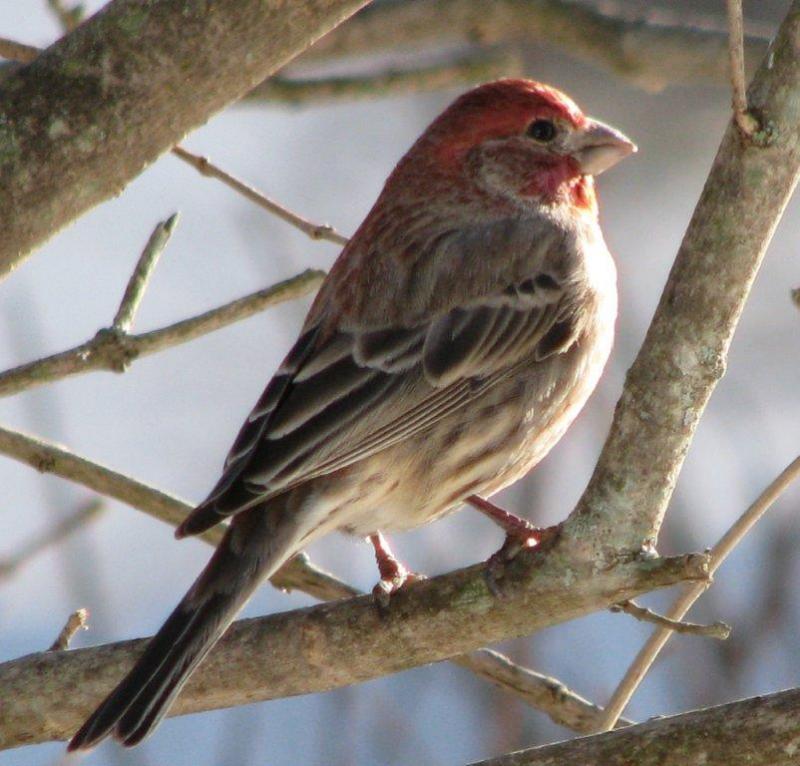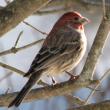Hollywood finches in Maine
Our esteemed editor sent us a photo recently of a bird that he wondered might be a house finch. Alas, it was not; the bird in question was in fact a pine grosbeak. A far more uncommon bird, pine grosbeaks only occur in Maine in winter, and their movements into the state depend largely on what’s happening in their normal range, which is mostly in northern Canada.
House finches on the other hand are now a common year-round resident in much of Maine. But that wasn’t always the case.
In fact, house finches originally occurred only in the western U.S. and Mexico. However, in 1940, a pet bird dealer from Long Island who had procured house finches illegally and was selling them under the name “Hollywood Finches” released the birds when he found that he was about to be busted for his crime.
The small flock of birds survived and over the ensuing decades grew in to a thriving population that has spread over virtually the entire eastern half of the U.S. and into southern Canada.
They reached Maine in the late 1970s, the first arrivals often being mistaken for purple finches or sometimes even the much smaller common redpoll.
The males can be differentiated from purple finches by the distinct brown streaking on the flanks and lower belly and the smaller, slightly curved beak. Female house finches have a plain brown face, lacking the broad white eyebrow shown by female purple finches.
The sounds that the two species make are quite different as well. House finches have a short call that to our ear sometimes sounds like the bark of a small dog, while the call of the purple finch is a rather, high short “pik.”
The songs of both are generally long melodious warbles but the house finch always adds in some harsh, jarring notes while the purple finch doesn’t. However, purple finches are also accomplished mimics and will add little bits of songs from other birds into their warbles. We’ve even occasionally heard them even include some harsher house finch calls, perhaps just to confuse us birders.
House finches are generally found in highest numbers in areas near human residences and around bird feeders while purple finches, though also fond of bird feeders, are also seen regularly in wilder areas with abundant spruce, fir, and pine trees.
Another aspect of house finch behavior that has probably allowed them to expand in human dominated environments is that they will nest in odd places like ledges and nooks and crannies of houses, garages, and office buildings. We have seen for ourselves house finches nesting in Christmas wreaths the homeowners hadn’t gotten around to removing from doors after the holidays – talk about co-housing.
Dr. Jeff Wells is the senior scientist for the Boreal Songbird Initiative. During his time at the famed Cornell Lab of Ornithology and as the Audubon Society's national bird conservation director, Dr. Wells earned a reputation as one of the nation's leading bird experts and conservation biologists. Jeff's grandfather, the late John Chase, was a columnist for the Boothbay Register for many years. Allison Childs Wells, also formerly of the Cornell Lab of Ornithology, is a widely published natural history writer and a senior director at the Natural Resources Council of Maine. Together, they have been writing and teaching people about birds for decades. The Maine natives are authors of the highly acclaimed book, “Maine's Favorite Birds.”
Event Date
Address
United States
























